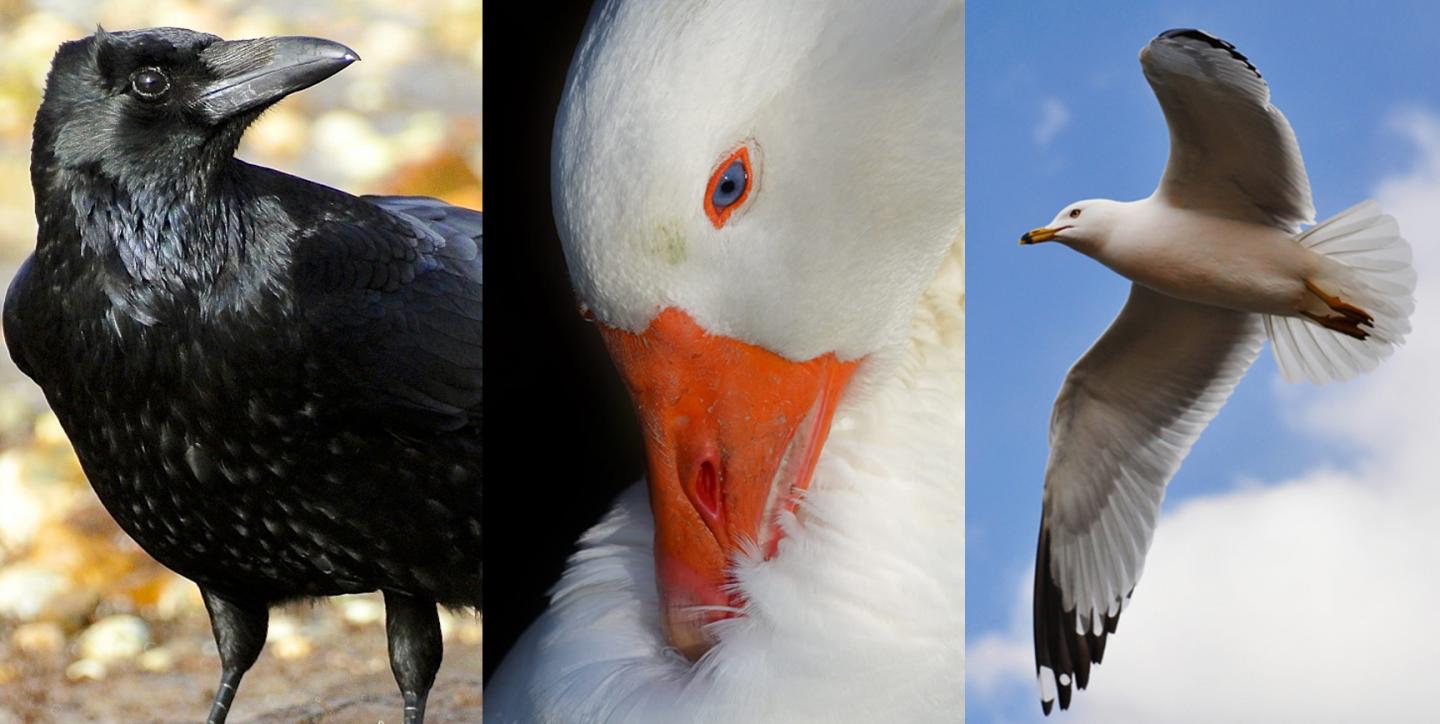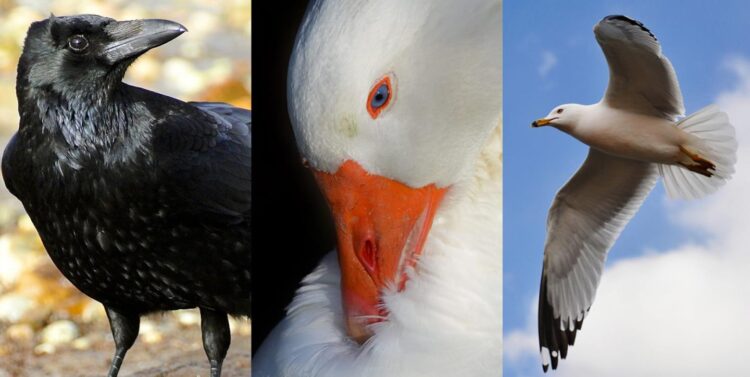Rice engineers show feces from gulls, ducks and crows harbor abundant resistant bacteria, resistance genes

Credit: Rice University
HOUSTON – (July 13, 2020) – Bird poop may pose more health risks than people realize, according to Rice University environmental engineers who study antibiotic resistance.
Their study found high levels of genes that encode antibiotic resistance harbored by opportunistic pathogens in the droppings of common urban ducks, crows and gulls.
The study led by postdoctoral research associate Pingfeng Yu of Rice’s Brown School of Engineering appears in the Elsevier journal Environmental Pollution. Yu is a member of the lab of civil and environmental engineer and co-author Pedro Alvarez.
Previous studies determined bird-carried antibiotic resistant genes (ARGs) and bacteria (ARBs) can be transferred to humans through swimming, contact with feces or impacted soil or inhalation of aerosolized fecal particles. Studies have also analyzed bird feces found near ARG hotspots like wastewater treatment plants and drainage from poultry farms.
But the Rice study digs deeper to quantify the abundance, diversity and seasonal persistence of ARGs.
“We still do not fully understand what factors exert selective pressure for the occurrence of ARGs in the gastrointestinal system of wild urban birds,” Alvarez said. “Residual antibiotics that are incidentally assimilated during foraging is likely one of these factors, but further research is needed to discern the importance of other potential etiological factors, such as bird diet, age, gut microbiome structure and other stressors.”
The team that included lead authors Huiru Zhao, a student at Nankai University in China, and Rice graduate student Ruonan Sun compared “freshly deposited” samples from each species found around Houston during the winter and summer months to samples from poultry and livestock known to carry some of the same mutations.
They found that ARGs in all of the species, regardless of season, encoded significant resistance to tetracycline, beta-lactam and sulfonamide antibiotics. The researchers were surprised to see the relatively high abundance of ARGs were comparable to those found in the fresh feces of poultry occasionally fed with antibiotics.
They also found intI1, an integron that facilitates rapid bacterial acquisition of antibiotic resistance, was five times more abundant in the birds than in farm animals.
“Our results indicate that urban wild birds are an overlooked but potentially important reservoir of antimicrobial resistance genes, although their significance as vectors for direct transmission of resistant infections is possible but improbable due to low frequency of human contact,” Alvarez said.
The team also looked for ARGs in soil up to 1 inch deep around bird deposits and discovered they are “moderately persistent” in the environment, with half-lives of up to 11.1 days.
Of the three species, crows showed a significantly lower level of ARGs during the summer compared to ducks and gulls, they reported.
“That’s probably due to differences in their ecological niches, foraging patterns and gut microbiome,” Sun said. “Crows are omnivores and feed on abundant natural food with less anthropogenic contaminations in the summer. In addition, the composition of their gut microbiome impacts ARG dissemination and enrichment in vivo, and therefore influences ARG levels in the excreted bird feces.”
The researchers found that opportunistic pathogens including bacteria that cause urinary tract infections, sepsis and respiratory infections were common in the feces of all of the birds, and another associated with food poisoning was detected in samples collected during the winter.
Winter feces, they wrote, contained more of the bad bacteria that may also harbor ARGs, possibly due to lower sunlight inactivation and differences in moisture levels and temperature.
“Our study raises awareness to avoid direct contact with bird droppings in urban public areas, especially for vulnerable or sensitive populations,” Yu said. “Meanwhile, regular cleaning should also help to mitigate associated health risks.”
###
Alvarez is the George R. Brown Professor of Civil and Environmental Engineering and a professor of chemistry and of chemical and biomolecular engineering.
The National Science Foundation and the China Scholarship Council supported the research.
Read the abstract at https:/
This news release can be found online at https:/
Follow Rice News and Media Relations via Twitter @RiceUNews.
Related materials:
Rice researchers look to ‘trap and zap’ coronavirus: http://news.
Alvarez Research Group: https:/
Rice Department of Civil and Environmental Engineering: https:/
George R. Brown School of Engineering: https:/
Image for download:
https:/
Urban crows, ducks and gulls are a potentially important reservoir of antimicrobial resistance genes, according to Rice University engineers who studied their droppings.
Located on a 300-acre forested campus in Houston, Rice University is consistently ranked among the nation’s top 20 universities by U.S. News & World Report. Rice has highly respected schools of Architecture, Business, Continuing Studies, Engineering, Humanities, Music, Natural Sciences and Social Sciences and is home to the Baker Institute for Public Policy. With 3,962 undergraduates and 3,027 graduate students, Rice’s undergraduate student-to-faculty ratio is just under 6-to-1. Its residential college system builds close-knit communities and lifelong friendships, just one reason why Rice is ranked No. 1 for lots of race/class interaction and No. 4 for quality of life by the Princeton Review. Rice is also rated as a best value among private universities by Kiplinger’s Personal Finance.
Media Contact
Jeff Falk
[email protected]
713-348-6775
Original Source
https:/
Related Journal Article
http://dx.





